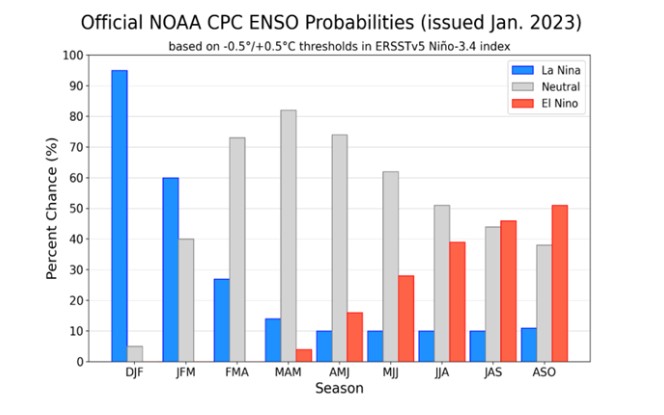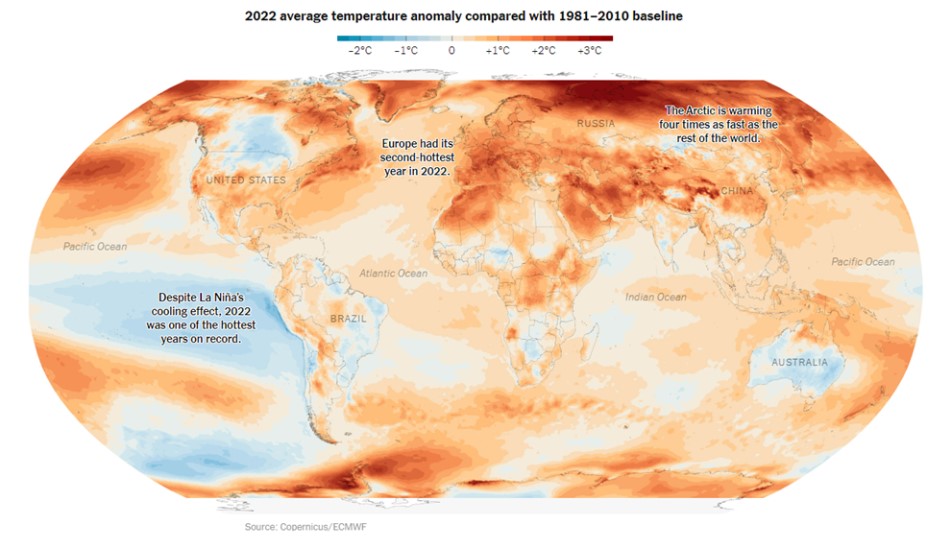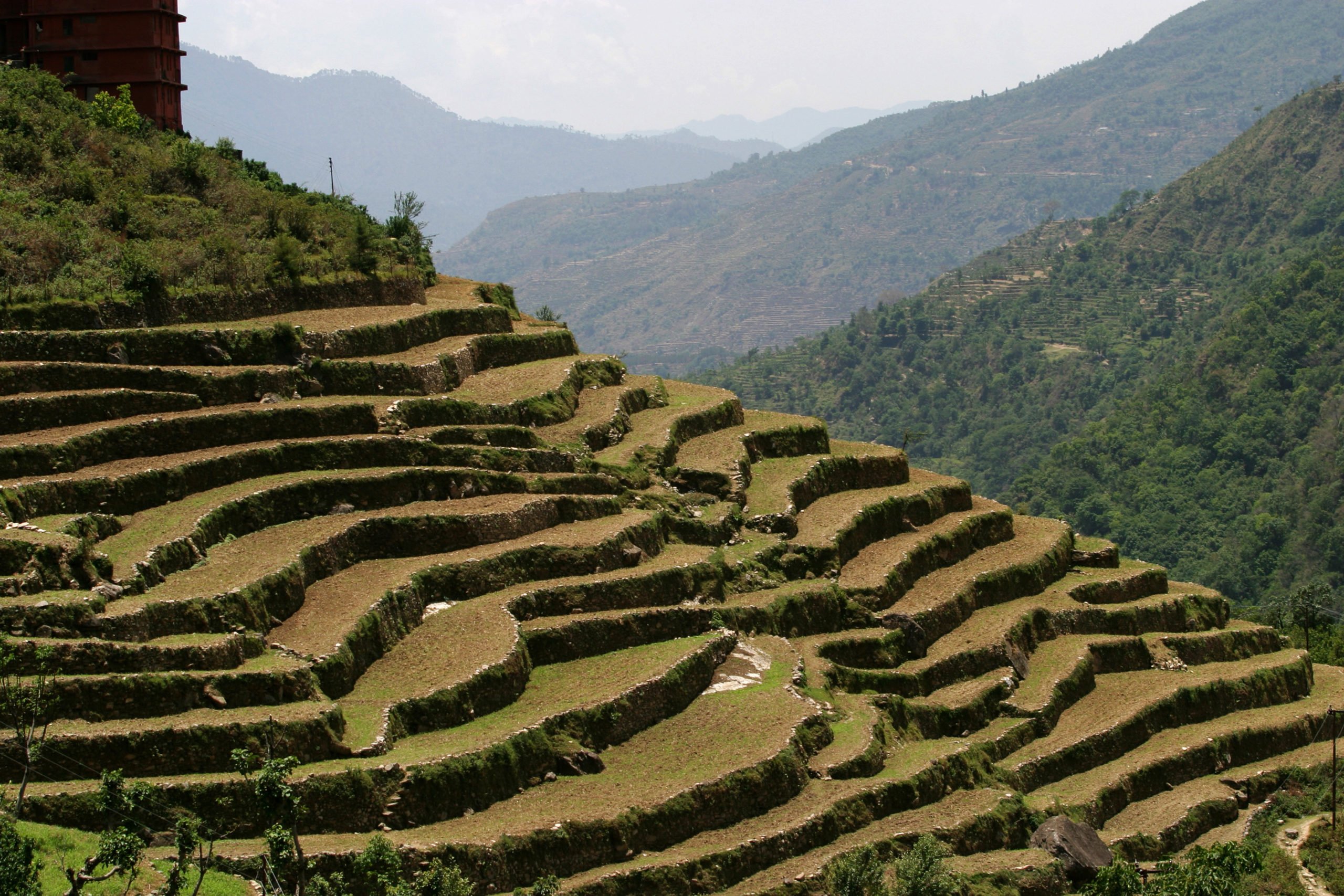Triple Dip La Niña to end soon, fails to negate impact of climate change
La Niña has already been weakening during the past few weeks. Prediction is that the La Niña is most likely to conclude with the recede of Northern Hemispheric winters.
By Editorial Team / Feb 8, 2023

The prolonged session of the Triple Dip La Niña is likely to come to an end very soon. La Niña has already been weakening during the past few weeks. Prediction is that the La Niña is most likely to conclude with the recede of Northern Hemispheric winters.

Source Credit: NOAA
The occurrence of three consecutive La Niña in the Northern Hemisphere is a relatively rare phenomena and is known as ‘triple dip’ La Niña. According to statistics, three La Niña events in a row has happened only twice since 1950.
These La Niña instances were observed during 1973-1976 and 1998-2001. According to NOAA, the longest La Niña was 37 months, from the spring of 1973 through the spring of 1976. This was followed by 1998-2001, which stayed for over 24 months.
At present, La Niña advisory remains in place, but Nino indices are now sitting very close to the threshold value of -0.5 degree Celsius. ENSO Neutral conditions when the Nino 3.4 indices are prevailing between -0.5 degree Celsius to 0.5 degree Celsius. These thresholds must be persisted for a period of at least 5 consecutive overlapping 3-month seasons.
Source Credit: NOAA
According to NOAA, a transition from La Niña to ENSO-neutral is anticipated during the February-April 2023 season. There is a sharp decline likely later and the window of March-May 2023 (Northern Hemisphere spring) may assert a dominating chance of ENSO neutral, with 82% probability.
Impact of climate change on La Niña
According to the World Meteorological Organization, the past eight years (2015-2022) were the warmest on record globally, fuelled by ever-rising greenhouse gas concentrations and accumulated heat. The average global temperature in 2022 was about 1.15 [1.02 to 1.27] °C above the pre-industrial (1850-1900) levels. 2022 is the 8th consecutive year (2015-2022) that annual global temperatures have reached at least 1°C above pre-industrial levels, according to all datasets compiled by WMO. With this, the last 10 years (2013-2022) have unarguably become the warmest decade.

While 2016, 2019 and 2020 being the top three hottest years, 2022 is the fifth warmest year. What is more surprising is the fact that despite the persistence of La Niña conditions for the three consecutive years, 2022 was amongst the list of record hot years. According to scientists, La Niña led cooling impact will be brief and will not reverse the long-term warming trend caused by record levels of heat-trapping greenhouse gases in our atmosphere.
“La Niña is a climate pattern marked by colder-than-normal sea surface temperatures in the equatorial Pacific Ocean that tend to suppress global temperatures. However, global warming and changing climatic conditions tend to play a major role, which can be temporarily governed by these ENSO conditions but cannot completely outplay the effects of climate change. Apparently, all the naturally occurring climate events like El Nino /La Niña / IOD now take place under the shadow of more powerful human induced climate change. La Niña cooling of 2020-2022 did not suffice and the years still got listed among the hottest on record,” said GP Sharma, President – Meteorology and Climate Change, Skymet Weather.
La Niña refers to the large-scale cooling of the ocean surface temperatures in the central and eastern equatorial Pacific Ocean, coupled with changes in the tropical atmospheric circulation.
Several researchers have already raised an alarm citing an increase in frequency of extreme El Niño and La Niña events from about one every 20 years to one every 10 years by the end of the 21st century under aggressive greenhouse gas emission scenarios.
In a warming climate, rainfall extremes are projected to shift eastward along the equator in the Pacific Ocean during El Niño events and westward during extreme La Niña events. Less clear is the potential evolution of rainfall patterns in the mid-latitudes, but extremes may be more pronounced if strong El Niños and La Niñas increase in frequency and amplitude.
Climate Change La NinaEl Nino

